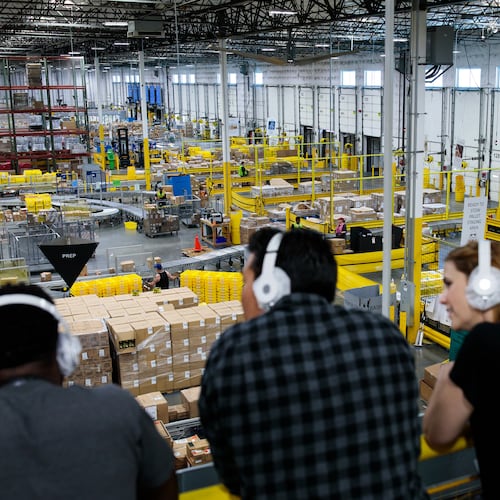Sandy Springs-based UPS reported a sharp decline in revenue and profit for the second quarter, triggering job cuts as it also navigated contentious labor contract talks and faced the threat of a strike by the Teamsters union.
UPS said its reduced its operations headcount by 7% as it closed some buildings and shifted packages to larger automated facilities. UPS said it cut management headcount by more than 2,500 positions, and reduced labor hours by nearly 10%.
Overall, the company reduced costs by a record amount in the second quarter, according to Chief Financial Officer Brian Newman.
Still, the company’s second quarter net income declined 27% to $2.1 billion, down from nearly $2.9 billion a year earlier.
“The second quarter was challenging,” said UPS CEO Carol Tomé during an investor conference call Tuesday. Customers shifted more packages to competitors than expected, as the strike threat heated up over the summer. Tomé said industry market share intelligence indicates a third of UPS’s lost business went to the U.S. Postal Service, a third went to FedEx and a third went to regional carriers.
UPS began losing some business to competitors earlier this year when customers were worried about how they would move their goods if a strike had happened.
In the second quarter, revenue declined nearly 11% to $22.1 billion compared to the year-ago quarter.
The April-June period encompassed much of the negotiations for the collective bargaining agreement with the International Brotherhood of Teamsters representing some 340,000 UPS drivers and package handlers. The two sides began national negotiations in April and came to agreement July 25, averting a strike the Teamsters had threatened to start Aug. 1 if a deal was not reached in time.
As UPS began negotiations, Tomé said, “it became very clear to me that we were negotiating on behalf of a number of stakeholders,” including employees, customers, the company, shareholders, and the entire country.
UPS moves about 6% of U.S. GDP, “and there was no place for this volume to go. So we avoided a disruption to the economy with this handshake agreement,” Tomé said. She said she expects the deal to be ratified in two weeks, with voting by rank-and-file members running until Aug. 22.
For management, “It’s all hands on deck to win back the volume that was diverted as a result of the labor negotiations,” Tomé said. “We think by the end of the year we will pull back everything that diverted.”
The company saw a reduction of about 1.2 million packages a day due to the labor negotiations, with its average daily volume reduced to 17.7 million packages in the second quarter.
“Looking ahead, we will stay on strategy to capture growth in the most attractive parts of the market and make our global integrated network even more efficient,” Tomé said. The company aims to grow its lucrative health care logistics business, with plans to make acquisitions for growth of that segment and improve its technological capabilities.
This is the company’s third straight quarter of revenue declines. In the fourth quarter of 2022, volume during the peak holiday shipping season fell short of expectations. Weak first quarter 2023 retail sales and international challenges prompted staff cuts and closures of some distribution sites.
The company cited the declines in volume and continued softness in Asia driving its dip in second quarter revenue.
Looking to the rest of the year, UPS said it expects volumes in the second half of 2023 to be down year-over-year. Wage increases in the Teamsters labor deal are “higher than we originally planned,” according to Newman, with a large portion of the pay hikes taking effect in the first year, a priority for the Teamsters.
The increased labor costs will be partially offset by the cuts made in headcount and hours. The company also plans to use more automation and robotics in its warehouses to reduce expenses.
In 2022, UPS brought in $100.3 billion in revenue for the full year. But earlier this year, the company cited economic uncertainty and expectations that its full-year revenue would decline to $97 billion. On Tuesday, the company slashed its full-year outlook to $93 billion in revenue for 2023.
That would be the company’s first decline in annual revenue since 2009 during the Great Recession.
The reduced revenue forecast reflects “the volume impact from labor negotiations,” according to UPS. It also said its operating margin will be lower due to costs associated with the new Teamster labor contracts.
About the Author
Keep Reading
The Latest
Featured



